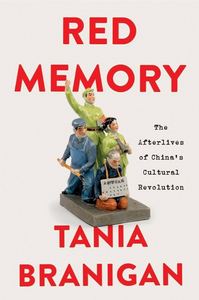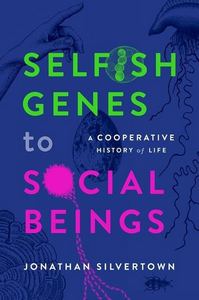Book Reviews – Branigan, Haug et al, Silvertown
Remembering and forgetting
 Red Memory: the Afterlives of China’s Cultural Revolution. By Tania Branigan. Faber & Faber. £9.99.
Red Memory: the Afterlives of China’s Cultural Revolution. By Tania Branigan. Faber & Faber. £9.99.
The Cultural Revolution lasted officially from 1966 to 1976, with the first couple of years being the most violent and disruptive. Perhaps two million were killed and thirty-six million ‘hounded’ in some way. It is not possible to understand China today, says Branigan, without understanding the Cultural Revolution. Her concern here is not so much with what happened then as with how it is remembered (or not) nowadays.
It is generally viewed as Mao Zedong’s way of destroying opposition within the Chinese ‘Communist’ Party, and people denounced family members and others for supposedly taking the ‘capitalist road’. The first victim in Beijing was a teacher battered to death by her pupils. Her husband documented her death, but the Red Guards responsible were never charged, presumably because they had connections with powerful people. But there were factions within the Red Guards, and some were later criticised and jailed.
From 1970, many Red Guards were sent to the countryside to live and work in communes (this included the present ruler, Xi Jinping). This is probably the only part of the Cultural Revolution that is still regarded in a positive way, viewed by many as ‘fresh air, comradeship and honest toil’, even though many young city-dwellers died while living on communes. Mostly, though, the events have been banished from public memory, although a number of memoirs and novels dealing with it were published in the years following. But this came to an end, and it now receives little coverage in textbooks, which certainly do not refer to the murders and suicides that took place. Unlike the 1989 Tiananmen Square killings, references to the 1966–76 period are not completely taboo, but they are carefully controlled. The CCP later described the Cultural Revolution as a catastrophe.
A museum dealing with the Cultural Revolution was set up, by a wealthy private individual, in the small southern town of Shantou, though it was later shut down. Amazingly, there are a number of Cultural Revolution restaurants, where waitresses wear Red Guard uniforms. These, says Branigan, are ‘serving up tragedy as farce’.
The days of Red Guard terror are over, but China remains a country where people have little freedom and an authoritarian regime is in charge. Xi has enormous personal power, the families of dissidents are punished and their children may be expelled from school, and the state tries to control people’s beliefs and emotions. Normal discussion is not tolerated, and of course it is now far easier to gather information on people. One apparently unrepentant Maoist tells Branigan that in today’s China, ‘eighty-five per cent of ordinary people can’t afford to buy a home or get medical care or education’.
A well-researched study of how rulers can manipulate the ruled and even impose amnesia.
PB
Not concise
 Historical-Critical Dictionary of Marxism. Editors: WF Haug, F Haug, P Jehle, W Kuttler. Brill, 2024
Historical-Critical Dictionary of Marxism. Editors: WF Haug, F Haug, P Jehle, W Kuttler. Brill, 2024
This is a selection of essays by a Berlin-based group of contributors, translated into English, in what the publishers claim is the Historical Materialism Book Series. It’s an open-access title freely distributed under the terms of the Creative Commons Licence. The start of the Foreword gives some indication of where they are coming from:
‘The sudden downfall of the Soviet Union and the Eastern bloc after 1989, an upheaval of cataclysmic proportions, left many of us in a state of shock, disbelief, grief, relief, doubt and hope. It forced us to take stock of what was irretrievably lost, and what could and should be saved’.
The result is this book. Its scope is impressively wide-ranging but pithy it ain’t. Anyone looking for concise dictionary definitions will be disappointed. Each of the 30 entries gives a detailed historical background but in crucial respects some are uncritical. Among the contributions you might not expect to find are entries on Cooking, Hackers, Hope and Intellectuals.
In the essay on Communism we are told that it is without classes, without state, without market and without contractual relations. However, the writer then poses the question:
‘Which form of trans-subjective relationship can determine such a society, without opening itself to the constitutive intersubjectivity of a new kind of social contract? Communism threatens to become an activist or operaist variant of an absolute knowledge in the sense of the Hegelian objective spirit.’
Whether the writer is being deliberately obscure or bullshitting is difficult to say, but this way of writing occurs frequently in this book. We are also told that socialism is a transitional society between capitalism and communism, where ‘social activity is still subject to the organisation by state planning’. Marx and Engels made no such distinction. Lenin did, though in the entry on Lenin’s Marxism this is not explained. Most of the contributors to this book refer to the former USSR as an example of ‘state-socialism’. There is no stand-alone entry on socialism.
The essay on Crisis Theories is probably the best of the book. It makes the point that Marx’s writings on this subject are ‘somewhat disjointed or even contradictory’. For three decades Marx wrote about underconsumption theories, overproduction theories, disproportionality theories, profit-squeeze theories, and overaccumulation theories which take the ‘law of the tendency of the rate of profit to fall’ as their starting point. The author argues that cyclical capitalist crises only emerged in the 1820s. In 1844 Engels was to state that ‘periodically recurring’ crises were an inherent feature of capitalism. This point is important because some influential defenders of capitalism wrote before this time. For instance, Jean-Baptiste Say’s Traité d’économie politique (A Treatise on Political Economy), published in 1803, declared that ‘the value we can buy is equal to the value we can produce’. This ‘law’ is usually interpreted as saying ‘supply creates its own demand’. Or, more precisely, that the normal state of an economy is equilibrium in which total demand equals total supply. This notion can still be found in some branches of capitalist economics where any imbalances are said to be ‘self-clearing’. This may have been the case when Say wrote but not when capitalist production became a competitive disequilibrium.
Lenin and Leninism are treated largely uncritically and the writings of Antonio Gramsci are given reverential handling. Most of the entries, to a greater or lesser extent, are guided by his thinking. For Gramsci, ‘organic intellectuals’ had a key role to play in social transformation. They would provide the cultural politics that would allow the working class to establish its hegemony. In Gramsci’s version of Leninism, capitalism is a system of privilege and oppression, but he said it is ‘the duty of the “leader” to explain the source of these privileges and this oppression’ to the working class. This is the way to socialism, so it is claimed. This cult of political leadership is a line of theory and practice which stretches back through the twentieth century from Gramsci to Lenin, to Kautsky and the Second International. Its failure wherever it is tried is a vindication of any basic understanding of Marxism: that the emancipation of the working class must be the work of the working class itself. There is no understanding of that anywhere in this book.
LEW
Social beings
 Selfish Genes to Social Beings. A Cooperative History of Life. By Jonathan Silvertown. Oxford University Press, 2024, 236pp.
Selfish Genes to Social Beings. A Cooperative History of Life. By Jonathan Silvertown. Oxford University Press, 2024, 236pp.
This is a remarkable book. It attempts to cover in a couple of hundred pages the whole 4 billion year history of life on earth – so obviously not just human life. Its author, a specialist in evolutionary ecology, does his best while not shirking necessary biological technicalities, to make it comprehensible to the everyday reader, to the non-specialist. Molecules, bacteria, cells, fungi and genes and their place in and contributions to the development and ongoing-ness of life are all investigated and explained both in their simplicity and their complexity. And it wears its expert knowledge lightly, interspersing it with jokes and other flashes of humour, largely via analogies from everyday human behaviour (eg, ‘insects are airliners for microbes, which travel in the gut, and just like an airliner, parts of the vessel are more hospitable to passengers than others’, or ‘Darwin forbid that I should suggest that nature is a con artist, but who can deny that she has a wicked sense of humour?’).
The book’s main point, the conclusion drawn from its painstaking and expert scientific analysis, is expressed in its sub-title (‘A Cooperative History of Life’) ie, the idea that life, all life, is and has only ever been possible through cooperation and teamwork between its various elements, and this also applies to human society and development. The author lays in its grave, if it was not there already, ‘the stereotype of nature red in tooth and claw’. In other words, he shows incontrovertibly that evolution is explained not by competition but by cooperation which, observed and analysed here, is ubiquitous in nature, not just in microbes and plants and animals but in humans too.
So, while largely about pre-human and non-human life, this study has important things to say about human life. It illustrates how central a role cooperation plays – and has always played – in human interaction and how this applies even in the most dire and challenging circumstances, for example wars and disasters. Underlying this is the fact that, most of the time, cooperation rather than selfishness or competition confers mutual benefit. Not of course that human beings are not capable of selfishness, going it alone or ruthless competition, and indeed it is that kind of behaviour – violence, brutality and the like – that tends to make the news. But the point made here is that cooperative behaviour is far more fundamental and deeply woven into our lives – and into all life – no matter how circumstances and the socio-economic system may militate against it. As the author puts it, ‘cooperation survives in spite of conflict’.
He is not of course alone in making arguments of this kind and is quick to acknowledge the slew of thinkers and writers who, over the last 20-30 years, have contributed to laying to rest the widely held secular version of original sin, ie, the notion of human beings as essentially wicked and Machiavellian and needing to be kept in check by a higher authority. As he puts it, ‘writers on this subject outbid each other in trying to describe just how cooperative we are, and there is little doubt that superlatives are justified’. Among the ’superlatives’ he quotes are ‘super-co-operators’ and ‘ultra-social species’, providing references to the works in which these appear in his notes and list of ‘further reading’. To emphasise this, he makes the point that ‘we are daily considerate towards people whom we have never seen before and may never see again’ and, if we are particularly annoyed when someone is inconsiderate, that is because ‘a norm has been broken’; thus ‘anti-social behaviour provides the exception that proves the existence of a pro-social rule.’ The other element he points to in typical human interaction is ‘having a good reputation’, seen as ‘important to attracting co-operators and acquiring the benefits, which is why we are so intensely interested in what others think of us’.
Despite his intense focus on cooperation and the natural human tendency to what he calls ‘community of interest’, the author is careful not to take up any explicit political position. It is, however, difficult not to sense that, if it were put to him, he would look favourably upon the idea of a system of voluntary cooperation in production and distribution and a wageless, moneyless society organised on the basis of from each according to ability to each according to need. After all, he does (somewhat improbably in the context) devote a short chapter of this book (‘A river of glowing light’) to the Russian anarchist and naturalist Peter Kropotkin and to his view that ‘justice for the masses could only come by abolishing the state altogether and replacing it by spontaneously organised cooperation’.
HKM
Next article: 50 Years Ago: Fascism, violence and the Left ➤
One Reply to “Book Reviews – Branigan, Haug et al, Silvertown”
Leave a Reply
You must be logged in to post a comment.

The review of the book by Jonathan Silvertown has been translated into Italian here:
https://antropocene.org/index.php?option=com_content&view=article&id=543:tre-recensioni&catid=12